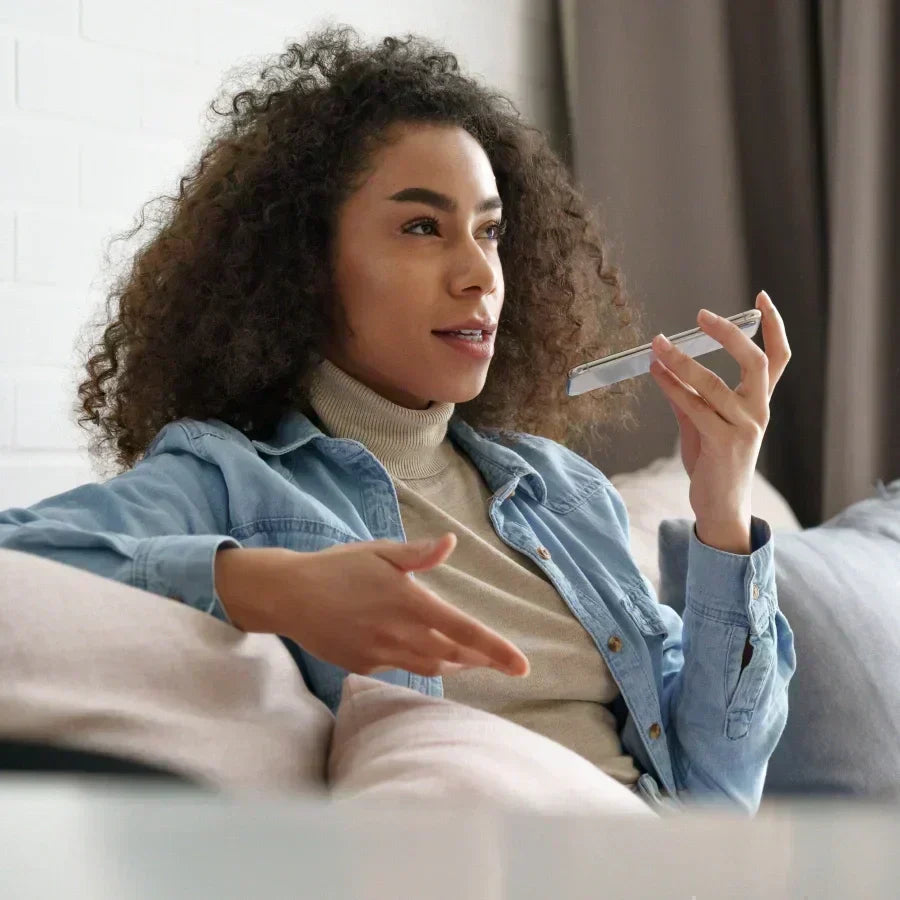You have just concluded a sales call. You felt secure after the prospect accepted your proposal. However, you discover the next day that they have moved on with someone else, whom you believed you had previously closed. Bummer, right?
Statistics show that only 2% of sales are closed on the first call, while over 80% need more work and follow-up emails after the meeting to close. We all want that client and we all want that sale, that is why a proper follow-up email is necessary after a meeting.
In this guide, we will help you out on how to write a follow-up email after a meeting that will get you the client you want.
Let's dive right in.
Why is it important to send a follow-up email after a meeting?
Following up after a meeting is not too good. A well-crafted follow-up email can mean the difference between a salesperson being remembered and completing a transaction. It maintains the momentum, exhibits professionalism, outlines responsibilities, and reaffirms your interest.
A lot of important stuff and opportunities can be missed if there isn't a quick follow-up. Follow-up emails are great if you want to make an expression and show your tenacity; whether you're confirming next steps or simply just saying "thank you” can mean a lot.
The psychology underlying this is rather obvious. People are busy, preoccupied, and have competing priorities. Your meeting may have been the highlight of your week, but for them, it was likely wedged between three other sales presentations and a budget meeting. Without a great follow-up, you're essentially hoping they'll remember you among all the noise.
How to write a follow-up email after a meeting: A follow-up email sample using AI

Here’s a step-by-step guide on how to write a meeting follow-up email using AI and how PLAUD products help automate the process:
Step 1: Record your WhatsApp calls or Google Meet meetings with PLAUD NOTE
Use PLAUD NOTE, a sleek AI voice recorder that attaches to your phone and captures high-quality audio from your meeting. Whether it's an in-person meeting or a WhatsApp sales call, PLAUD NOTE ensures every word is recorded. You can also trim your audio for better results and keep the one you feel like works for you.

Step 2: Get the meeting transcript
Once the meeting ends, the PLAUD app will transcribe the audio, hence giving you a word-for-word record of your conversation. But it doesn't end there. PLAUD also converts the raw transcript into a working asset. Inside the app, you may instantly access AI-powered templates designed for various sales scenarios.

Whether you need a summary, proposal follow-up, or thank-you email, you can choose a pre-made template from the PLAUD Template Community or create your own, saving you time and effort. This will then become your source material for writing a precise and personalized email.

Step 3: Feed the transcript to AI for email generation
Once you get the meeting summary or transcripts, you can copy that information to an AI, let the AI help you write a follow-up email.

Example output prompt
“You are an email assistant. Based on the provided meeting notes or conversation summary, write a follow-up email in a clear, professional, and concise tone. The email must include the following structure:
Step 1: Appreciation—Start the email by thanking the participants for their time and engagement.
Step 2: Recap—Briefly summarize the purpose of the meeting and the key discussion points.
Step 3: Decisions Made—Clearly state the main decisions or conclusions that were reached during the meeting.
Step 4: Next Steps—Outline the action items, deadlines (if any), and who is responsible for each task.
Keep the tone courteous and collaborative.
-
The subject line should be relevant and helpful (e.g., "Follow-Up on [Meeting Topic]–[Date]").
-
Input format example:
“Meeting Summary: Discussed marketing launch strategy. Agreed on timeline shift to Q4. Sarah to lead campaign strategy. Tom is to revise the budget by next Tuesday.” -
Output: A complete email message.”
Alternatively, PLAUD also allows you to proceed to the next step, email generation, without leaving the platform once your transcript is complete. This is how it works.
-
Click “Ask AI“
-
Send your prompt
-
Customize with ease: Tone, details, and content may all be edited immediately in the app to meet your client's situation.

Example output prompt (automatically handled in PLAUD):
"Write a follow-up email on this meeting. Highlight the client's difficulties, our offered solutions, and the agreed-upon future steps. Maintain a pleasant and professional tone, which is ideal for moving a sales conversation forward.”
No copying and pasting. There is no switching between tools. PLAUD automates everything from voice to transcript to personalized email, allowing you to close business faster.
Step 4: Review, refine, and send the follow-up email
-
Review for Accuracy: Make sure names, dates, and commitments are correct.
-
Personalize and Refine: You can add a friendly touch or tailor the tone to your style of interest.
-
Send to the Client: When it's good, hit send!
PLAUD helps streamline this workflow from recording to transcribing to AI-driven follow-up generation, so you can focus on selling.
How to write up a follow-up email?

Step 1. Put forth appreciation
Begin on a positive note. Thank your audience for what they brought to the table in terms of time, input, or insight, which they shared in the meeting. This sets a good professional tone right from the start. Also, a simple “Thank you for taking the time out to meet” does a great job in which you show respect and gratitude.
Step 2. Go over the meeting
Very briefly go over what was discussed in the meeting and which topics came up. This will refresh the recollection of the recipient and also provide context in case they had many back-to-back meetings that day. For instance, we went over your Q3 marketing goals and how our platform fits into that.
Step 3. Report out on the main decisions
Report out on what was decided in the meeting, which includes what was agreed upon, what offers were made, what requests were put forth, and what action items were generated. This promotes mutual understanding and also rules out any misinterpretations down the line. Use bullet points for better readability.
Step 4. What’s to be done moving forward?
Figure out what the next steps are and who is responsible for what. If you said you will put together a proposal, set up a demo, or get back with answers, make that very clear. Also include what you expect from them, if applicable.
Step 5. Set the date for the next meeting
If another meeting is on the books, please always confirm the date and time. If not, put forth a few options to keep the energy going. This also helps you not to delay and presents you as very organized and proactive.
Tips for Writing Effective Post-Meeting Emails
-
Within 24 hours of the meeting, get it out there to stay relevant.
-
Keep it brief. Value their time.
-
Identify and put forward action items.
-
End on a high note to maintain that goodwill.
Follow-Up Email Templates
After a team meeting
Subject: Recap and Next Steps from Today’s Team Meeting
Hi [Team],
Thanks for your time today. Here’s a quick recap of our discussion and next steps:
-
...
-
... Let me know if I missed anything.
Best, [Your Name]

After a meeting with a prospect/potential client
Subject: Great Meeting You Today, [Client Name]!
Hi [Client Name],
Thanks for meeting today. I enjoyed our conversation and learning more about [their company/problem]. Here’s what we discussed and proposed next steps:
-
...
-
... Looking forward to continuing the conversation!
Warm regards,
[Your Name]

After a networking event
Subject: Great to Connect at [Event Name]!
Hi [Name],
It was a pleasure meeting you at [event]. I’d love to stay in touch and explore how we might collaborate in the future.
Let me know if you’re open to a quick follow-up chat.
Cheers,
[Your Name]

After a client meeting
Subject: Follow-Up & Next Steps from Our Meeting
Hi [Customer Name],
Thanks for your time today. Based on our discussion, here’s what we agreed on and what comes next:
-
... Let me know if you need anything else!
Best,
[Your Name]

To ask for meeting feedback
Subject: Quick Feedback Request from Our Meeting
Hi [Name],
Thanks again for meeting with me. I’m always looking to improve—could you share any quick feedback on how the meeting went or anything I could have done better?
Appreciate your time!
Best,
[Your Name]

FAQ
How do you go about writing that first follow-up email?
Politeness is the base, but going beyond that to set the right tone for the whole relationship is what really counts. Also, it has been noticed that the best openers, which do the job, are the ones that reference something from your past conversation and not generic pleasantries.
What is a good subject for your follow-up email after the post-meeting?
Subject lines are your chance to really grab attention. We have run through many options over the years, and what we found out is that very specific and action-oriented subject lines that get the point across do the best job.
How do you put together a good meeting report email?
A good meeting report email is a highlight of the meeting. We include the key takeaways, but we also avoid going into all the details, which aren’t relevant to everyone. Try to zero in on these 3 things: what was discussed, what was decided, and what is the plan moving forward.
What is my best bet to have my follow-up email to a meeting work?
Use tools like PLAUD to hit all the points, keep it short and to the point, and also make sure that what was agreed upon is very clear in terms of what is to be done and by when.
Final Note: Politeness is a base, but what really counts in follow-up emails after a meeting is results and better relationships. The use of AI tools like PLAUD NOTE and proven email strategies gives you a system that you can scale as you grow your sales efforts.



